Omkara Mantra Nilayam Mandhara Kusumapriyam |
Prutharaga priyadharam Jyothir mayam sivam Namami ||

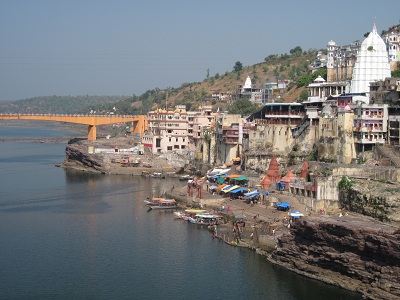

The Siddhanath Temple, dedicated to Lord Shiva, is made in Brahminic architecture style. The temple is situated on a plateau and is supported by a huge podium, which is decorated with carvings and frescoes All the carvings and frescoes on the podium, portray elephants in different postures. The temple has four facades on all four sides with decks.

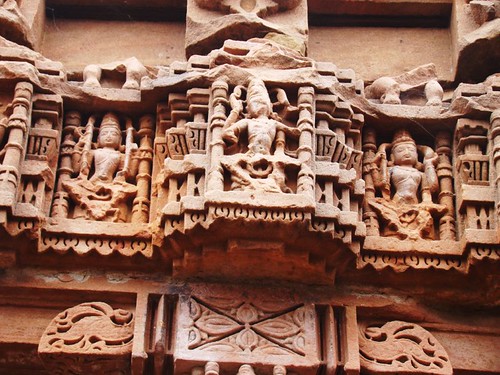
The temple of Mamaleshwar houses one of the jyotirlingas, amongst the twelve in India. The temple is situated on the opposite bank of the Narmada river as that of the Omkareshwar Temple. In spite of the Omkareshwar Temple being famous for the Jyotirlinga, Mamaleshwar holds the actual Jyotirling.The Mamaleshwar Temple is a temple with a hall and a sanctum. The Shiva Linga is present in the centre of sanctum. An idol of Goddess Parvati is located on the backside of the Shiva Linga, in the wall. There are also several other temples of Lord Shiva around the main temple of Mamaleswar.

Maheshwar was a glorious city at the dawn of Indian civilization when it was Mahishmati, capital of king Kartivarjun. This temple town on the banks of the river Narmada finds mention in the epics of Ramayana and Mahabharata.Derived from the name of Lord Shiva, Maheshwar in Hindi means ‘habitat of Shiva’. It is believed that King Sahasrarjun, husband of 500 wives stopped River Narmada with his 1,000 arms to create a play field for his wives. During this time, Ravana made a shivalinga on the riverside. When he released the water of the river, the shivalinga was washed away, which resulted in war between the two. After the victory of the king, he placed ten lamps on Ravana’s heads and one on his hand. At present, 11 lamps are lighted in the Sahasrarjun Temple that keeps the event alive. Revived to its ancient position of importance by the Holkar queen Rani Ahilyabai of Indore. Maheshwar's temples and mighty fort-complex stand in quiet beauty, mirrored in the river below. Today, Maheshwar is also known for its distinctive handwoven sarees called Maheshwari exquisitely woven ‘Maheshwari’ sarees.Maheshwari Sarees were introduced into Maheshwar 250 years ago by Rani Ahilyabai, and are renowned throughout India for their unique weave.
Places you must visit:
Rajwada depicts the history related to the Holkars and is situated in the heart of the town. Having a structure of seven storeys, the edifice is believed to have been constructed under the orders of Devi Ahilyabai Holkar. This building displays the combination of Muslim, French and Maratha styles in its architecture.A life-size statue of Rani Ahilyabai sits on a throne in the Rajgaddi within the fort complex. Other fascinating relics and heirlooms of the Holkar dynasty can be seen in the other rooms which are open to the public. Within the complex is an exquisite small shrine which is a starting point of the ancient Dussehra ceremony which is carried out even today. The image on this day is installed reverently in a splendid palanquin and carried down the steep fort road to the town below to receive the yearly homage of the people of Maheshwar.

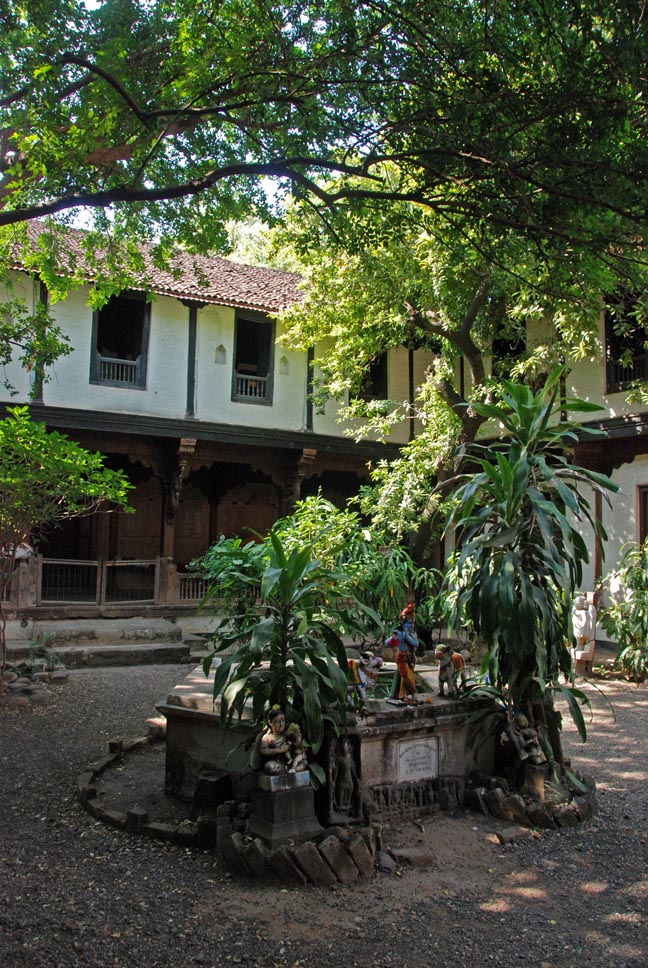
Holkar Fort, located on the bank of River Narmada, was built in the 18th century. This monument was the residence of Queen Ahilyabai Holkar, due to which it is also known as the Queen's Fort.It also served as the administrative headquarters of the queen and has now been converted into a guesthouse. Presently, it is managed by the son of the last Maharajah of Indore, Prince Shivaji Rao Holkar.This fort displays various chhatris and a seat, where Ahilyabai used to sit. It houses a Wada Palace, which was built in 1766, and represents the architecture of the Maratha period. In addition to these, this ancient monument is home to various temples that are dedicated to different avatars of Lord Shiva.
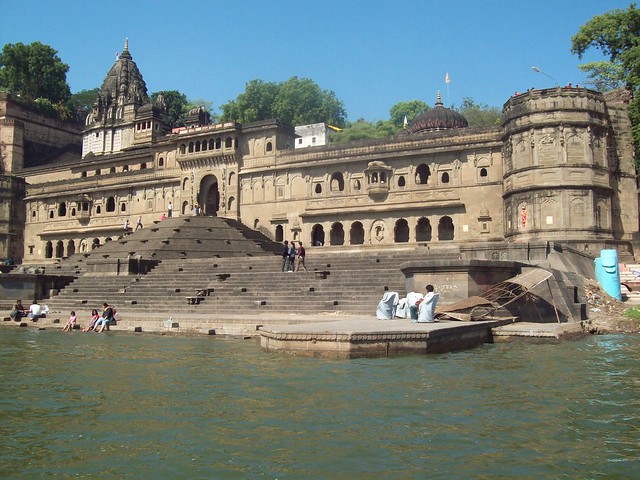


Peshwa, Ahilya and Fanese Ghats are situated along the shores of River Narmada. These Ghats are always visited by numerous devotees and visitors, owing to their sanctity. Besides, these Ghats also have various memorials carved in stone, which were built to commemorate the Satis of Maheshwar or Lord Shiva. Meaning of Sati is 'females who perished on the funeral pyres of their husbands'. Moreover, countless temples are located along the banks of these Ghats, which are dedicated to various Hindu Lords.

Kaleshwara Temple lies within equipped ramparts on the northern banks of River Narmada. This temple has the deity of Lord Kaleshwar, who was considered as the destructive avatar of Lord Shiva. The Kaleshwar avatar is believed to destroy everything completely and dissolve it as it was nothing. Located on an elevated platform, this temple is red in color and contains various spiral domes. These domes are pointed in upward direction with vertical projections.


Ahileshwara Temple is located on the shores of the River Narmada. This temple is home to another shrine dedicated to Lord Ram, besides its main shrine. Various carvings adorn the front side of this temple. In addition to these, this temple also exhibits several images of Maratha soldiers and elephants, which attracts many visitors to its premises.

Navdatoli is located on the opposite side of the shores of River Narmada. It is regarded as a pre-historic site, which used to be the home for the various cultures from the Paleolithic period till the 18th century. During an excavation in 1950, its ruins were found in along with the painted pottery and numerous microliths. Moreover the 3rd period of this culture is believed to be between 1500 BC and 1200 BC. The ruins of several of the discovered house plans were in the shape of either rectangular or circular buildings. Having the circumference of about 3 m it is found that these circular houses had split bamboo walls and roof with a covering of mud.


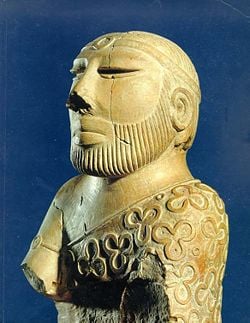
Pandharinath Temple is counted among one of the famous temples of Maheshwar, which is dedicated to Lord Vishnu. As per legend, the incarnation of Lord Krishna took place on the 8th day of Sravan month. It is because of this, that Pandrinath is one of the other names of Lord Krishna.This temple is known for its architectural carvings of the Puranas and balconies. In addition to these, the temple also has decorated doors, which are carved with numerous designs and reflect the work of the era. The notion of the worship of Mahavishnu in the form of Pandrinath was originated from the Vaishnava Saints and Puranas belonging to the period range from 13th to 17th century. With the help of their teachings, kirtans and poems, these saints created this form of worship.

Kashi Viswanath Temple is dedicated to the Jyotirlinga form of Lord Shiva and is among the renowned temples of Maheshwar. This temple was built by Queen Ahilyabai Holkar of the Holkar Dynasty.As per mythology, devotees will be relieved from their pains and sorrows on the holy darshan of this Jyotirlinga. It is believed that the darshan of this Jyotirlinga is equal to the darshan of all the other Jyotirlingas in the rest of India.
Rewa Society is a weaving center developed by Richard and Sally Holkar of the Holkar Dynasty. This society has helped in the growth and enhancement of the hand-loom industry and is known for producing the Maheshwari sarees.

Khargone is the administrative headquarter of Khargone District and is located around 20 km from Maheshwar. Located on the shores of Kunda River, the town is famous for cotton and chilly production. Tourists can also visit the famous Navagraha Temple in the town, which is dedicated to the Navagrahas.

Mandleshwar town is situated on the banks of river Narmada, at a distance of about 5 km from Maheshwar. The town was founded by Mandana Mishra, and has a stone fort constructed by Mogul rulers. It also has a fine flight of 123 steps leading down to the river and expanding below into a wide ghat. Tukoji Rao Holkar II built a palace here. It was also the headquarters of the Nimar Agency and Cantonment under the British from 1819 to 1864. The town is an important retail marketing and trade center.


Oon,18 km from Khargone was a flourishing place 1000 years ago. About a dozen temples, both Hindu and Jain lie clustering here and represent an architecture patronized by the Parmara kings of Malwa. The carvings on the temples are quite similar to those in Khajuraho. An important place for Jain pilgrimage.

Bawangaja which is 10 km from Barwani, tehsil headquarters of Khargone distt., the Bawangaja temples are 170 km from Indore. The 72 ft high Jain statue here has been hew in the rock. It belongs to the early 15th century. Bawangaja is an important Jain pilgrim center.



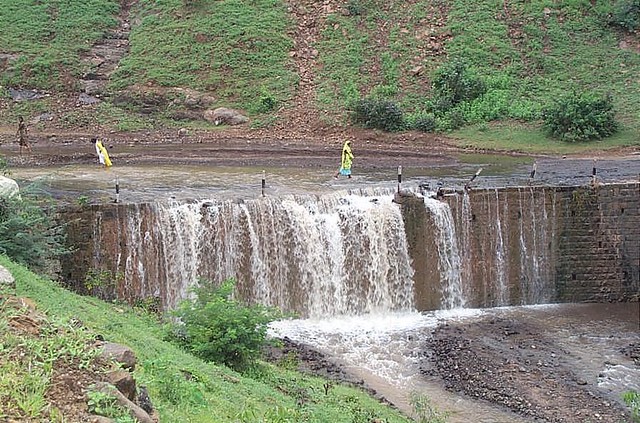
No comments:
Post a Comment